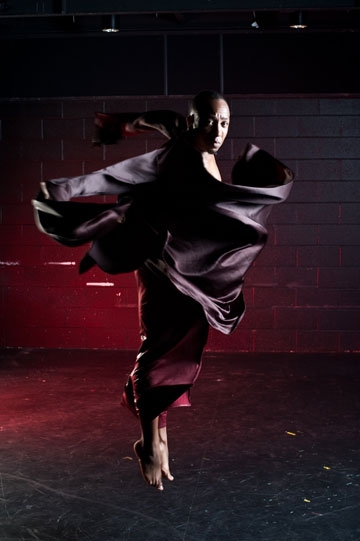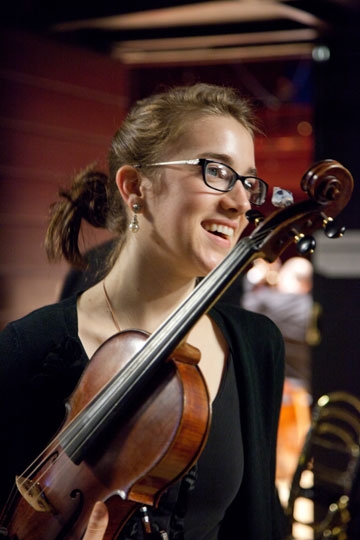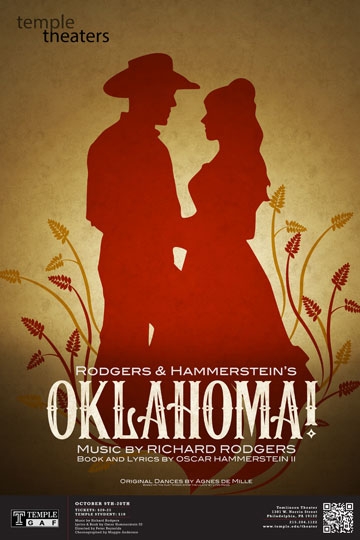Everything has an origin, a point of birth, including row homes and plays. And all things have a life cycle, whether weeks for the honeybee or millennia for music from the masters.
The exploration of origins and life cycles pop up in many of the events this fall at Temple’s Center for the Arts. While these themes may be unintentional, they resonate with the origins and life cycle of the Center for the Arts itself: The recent birth of the center brings together several established and thriving arts programs so they may find even richer life through their collaboration.
The Center for the Arts had its origin in 2012, combining the Boyer College of Music and Dance, Tyler School of Art and the Division of Theater, Film and Media Arts.
“The artistic output is immense, with over 1,200 arts events each year,” said Robert Stroker, dean and vice provost for the arts. “Each program is doing amazingly creative work, both individually and in collaboration.”
This fall’s events showcase that originality.
Charles O. Anderson’s company, Dance Theatre X, began life at Temple’s Conwell Dance Theater a decade ago, the year after Anderson earned his MFA from Temple. In October, the company returns to its roots with Restless Natives. The rhythmic performance wrestles with the question of what it means to be loved.
Life in the rural Midwest a century ago is far from our contemporary experience. And yet Rogers and Hammerstein’s first musical, Oklahoma!, still captivates audiences. In celebration of the musical’s 70th anniversary, actors from Temple Theaters and musicians from the Boyer College present Oklahoma! October 9–20.
Scheduled for November, The Brother/Sister Plays by Tarell Alvin McCraney are grounded in the African-American life experience in the Louisiana bayou but reach back to African origins and mythology. The three plays cover a 17-year span, ending with a big storm on the horizon, foreshadowing Hurricane Katrina.
“The playwright is getting at the idea of renewal,” said Lee Kenneth Richardson, associate professor of acting and directing, “and how important rituals are to a community. Where do you start when everything washes away?”
Also slated for November and in honor of another anniversary, the 100th of composer Benjamin Britten’s birth, Temple University Opera Theater performs Albert Herring. The comedy, written and sung in English, tells the story of Albert Herring and how his crowning as May King changes the life he was prescribed.
The Art Market at Tyler, October 11-12, offers the opportunity to purchase original, yet affordable, artwork — from scarves and jewelry to photography, glass and ceramics. Sponsored by the Tyler School of Art Alumni Association, the show and sale features pieces by Tyler alumni, students and faculty in addition to work by non-alumni.
Also at Tyler, Temple Contemporary will remember the life of a single row home in A Funeral for a Home. The project will gather the stories and history of a single row home and surrounding neighborhood. The razing of the house will be a community event, with an obituary in the Philadelphia Inquirer.
“This project allows Philadelphians to reflect on what was, as well as where we are going,” said Sarah Biemiller, assistant director of Temple Contemporary. As part of the project, Temple Contemporary is offering trolley tours of historic and contemporary row homes to further explore how homes create community.
Another Temple Contemporary project chronicles the short but productive lives of honeybees. Through February, visitors to the gallery can watch as they add honeycomb to their one-of-a-kind miniature row home designed by Rick Araluce.
From the Department of Film and Media Arts is a visiting artist series featuring the screening and discussion of four films throughout the fall.. During the series, filmmakers will reveal how they brought their vision to life.
In December, the Temple University Concert Choir, Temple Bach Orchestra and Temple Dancers Barocco present Johan Sebastian Bach’s Cantata No. 201. Known as The Contest Between Phoebus and Pan, this piece explores notions of “high” and “low” art.
For more information, contact the Center for the Arts.


